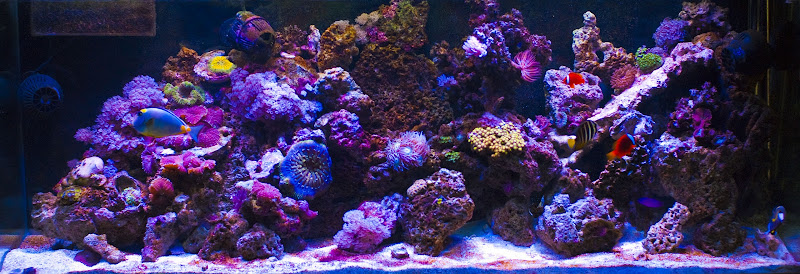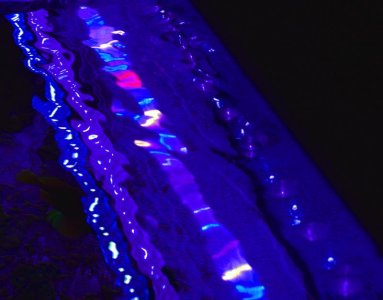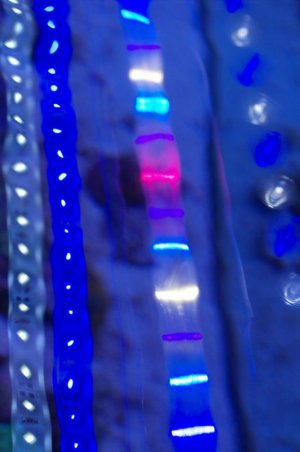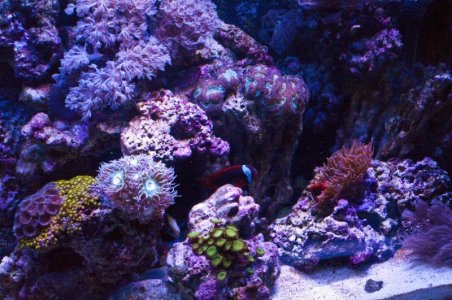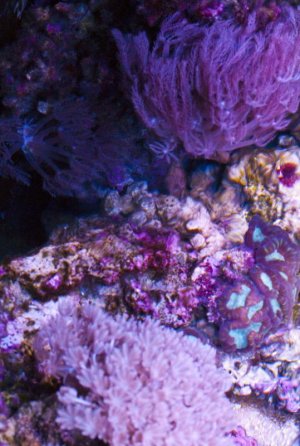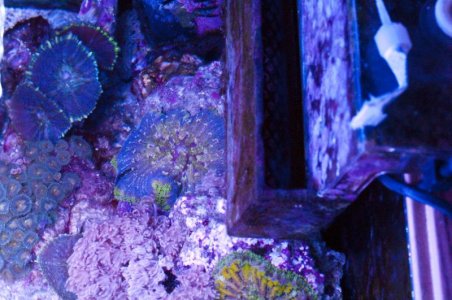I've been following the various discussions about LEDs and have been interested about what "it" is that many of the LED fixtures are missing. In doing so, I started looking at European reef forums since there are some extremely successful reefs there that use LED. For the most part the common denominators both there as well as here seem to be the following:
1) More emitters to improve coverage, no lenses used
2) Total wattage is closer to traditional lighting
3) Use of full spectrum but not too much yellow or white.
4) Use of Violet LEDs(~420-430nm)
Then I found the best LED lit reef I've ever seen and a contender for top 10 in my book, the Triton Shop reef, using Lani LEDs made there. There is no secret to what they are using, but what they are doing as far as spectrum goes against almost everything Ive seen regarding LEDs:
1) Per 16"X16" square, the base model uses 32 Cree cool white and 32 Cree Blue(not royal blue)
2) They also use 16 true violet LEDs, exact spectrum not known, but I'd guess 420-430 since they refer to them as "purple"
3) They cover the tank almost completely with emitters, and run them at max 1watt each for efficiency. Heatsinks with no fans, no lenses used.
The Lani Pro adds 8 red, 8 deep red, and 8 royal blue to the above set of emitters for "color rendition" which makes the corals look even better from what I can gather but not much else.
In looking at a bunch of threads from there, people who see these tanks say that the corals look electric, and rave about the color(the pictures look good too). Corals grow like weeds. 1Meter deep tanks have no problems with penetration. No ramping of LED outputs are done for acclimation, corals don't seem to get burned like with some LED systems.
Have we been missing something here in the US when it comes to what emitters we choose? Most LED experts warn to not use Blue LEDs except as accents to the normal royal blue, and almost everyone seems to have moved away from cool white LEDS these days. Is having a massive peak of 420nm light enough to overcome the issues with these LEDs or is there some other synergy that happens?






